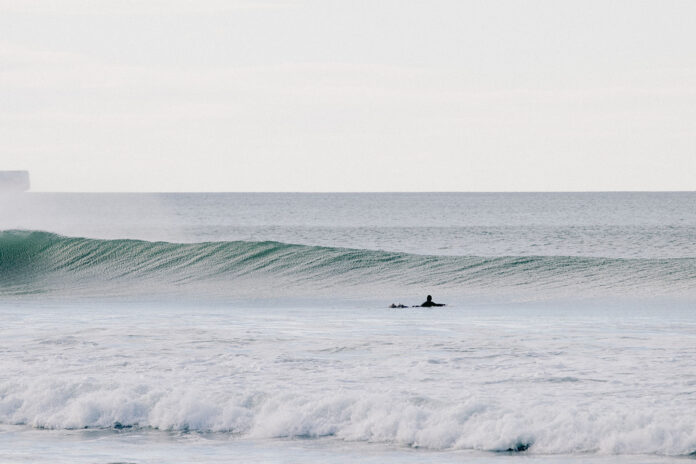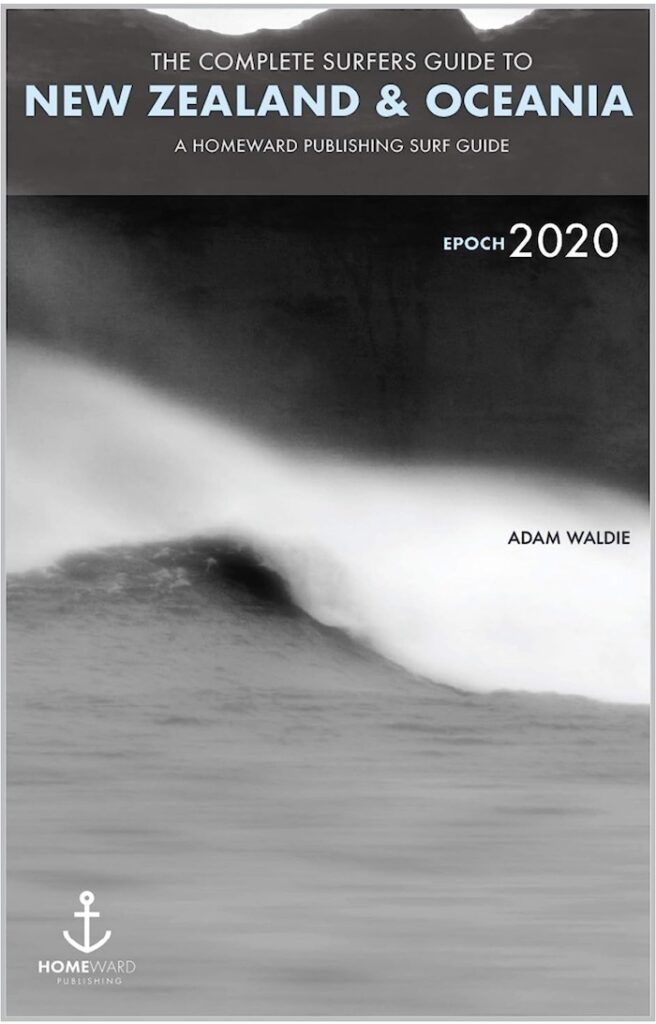Last updated:
New Zealand, the land of the long white cloud, is not just famous for its stunning landscapes and the legacy of the Lord of the Rings — it’s also a hidden gem for surfers of all levels. From its remote sandy beaches to world-class reef breaks, New Zealand offers an unrivaled surfing experience that captures the hearts of wave riders worldwide.
Why New Zealand?
For starters, New Zealand is incredibly easy to navigate, boasting excellent infrastructure and English as its official language. You’ll find 4G and 5G connectivity across most of the country and modern amenities, including clean public ablutions and affordable campgrounds. This makes it a hassle-free destination for travelers and surfers alike. Moreover, it’s one of the safest countries in the world, providing the comfort and peace of mind that allows surfers to explore the remotest corners of the country without worrying too much about personal security.
Where else in the world can you board a regional flight with no security checks or luggage scans? This is the reality in Aoteroa, and somewhere along their 15,000 km (9,300 miles) coastline, there is an uncrowded wave breaking right… this… moment.
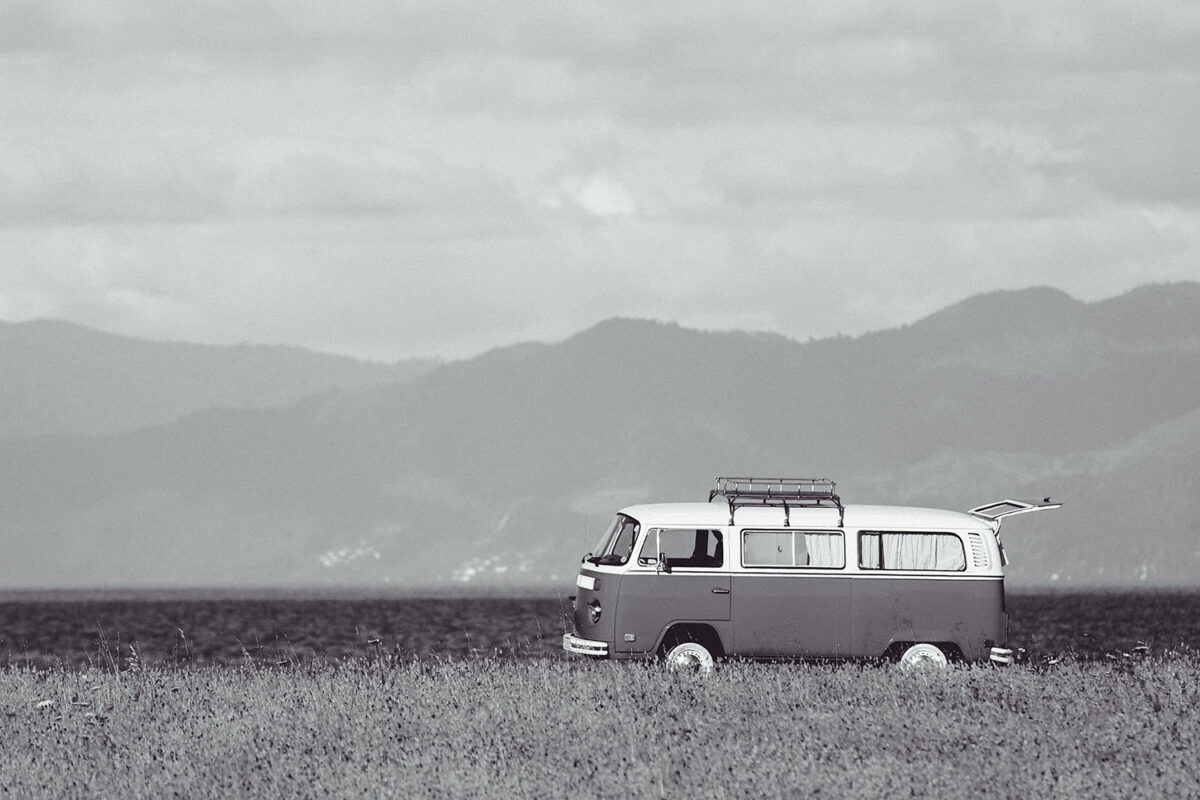
Ah, New Zealand in a campervan. This is the dream trip for many, and there’s something uniquely liberating about cruising the roads of New Zealand in a van or motorhome. The diverse, cinematic landscapes are a feast for the eyes, and the convenience of a mobile home allows you to chase the swells wherever they roll in.
If you wish to stay in the free or very cheap DOC (Department of Conservation) reserves or council car parks, you will need a little blue “Self-contained” sticker on your van, indicating that you have a toilet on board. The toilets in smaller vans are often no more than adult-sized “potties” with chemical additives to break down your droppings. Use them if you dare, but please, please do not leave human waste in the bushes or roadside. Kiwis love the great outdoors and despise those who foul the environment.
As for the surfing itself, New Zealand boasts an impressive variety of waves, ranging from mellow beach breaks, perfect for beginners, to powerful reef breaks that challenge even the most seasoned surfers. Legendary surf towns such as Raglan, Kaikoura, and Ahipara offer world-class waves comparable to some of the most renowned surf spots globally.
The country’s coastline is abundant with uncrowded surf spots. Venture just a few hundred meters up or down the beach from popular spots, and you’re likely to find an empty corner with unspoiled waves just for you. Even at the legendary Raglan, the beach break often remains pleasantly uncrowded.
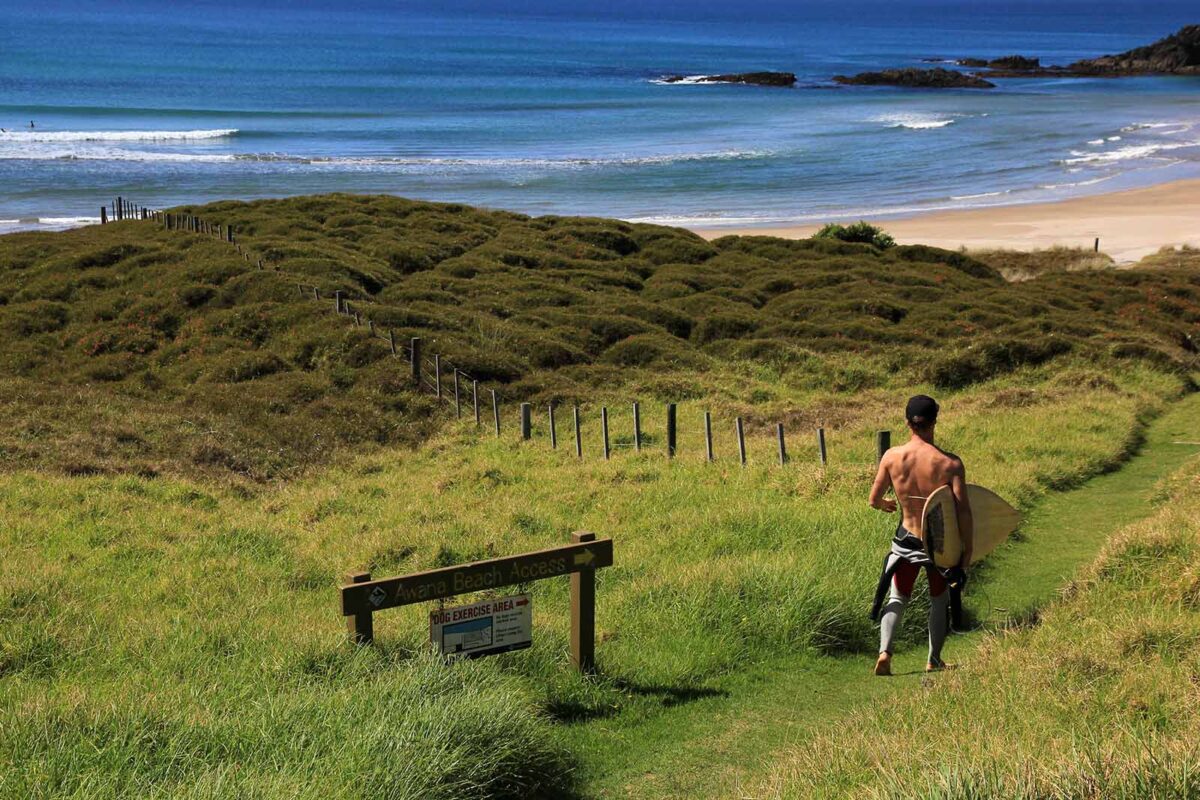
One can’t overlook the Kiwi locals — friendly and welcoming; the local surf community is usually willing to share tips and information about the best spots and conditions. If you’re chill and respectful, you’ll have a great time! Sometimes Kiwi locals will even be happy to see another face in an empty lineup. I’ve had many such experiences.
Moreover, New Zealand is well-equipped for surfers, with plenty of surf shops across the country, so you’re never too far away from gear or a much-needed repair.
Preparing for Your Surf Trip
Before embarking on your surf adventure, keep in mind that public transport is limited, especially in rural areas. You’ll need to arrange for a vehicle, and what could be better than a campervan? While they can be pricey to rent, consider buying one and reselling it when your trip concludes – it could save you money and provide an authentic Kiwi road trip experience.
Water temperatures can vary considerably between the North and South Islands, so packing a wetsuit is essential. For southern regions, or in winter, gloves, boots, and a hood might also be needed. And don’t forget a quiver of boards, suitable for the diverse range of waves you’ll encounter, from mushy beach breaks to punchy, hollow reef breaks.
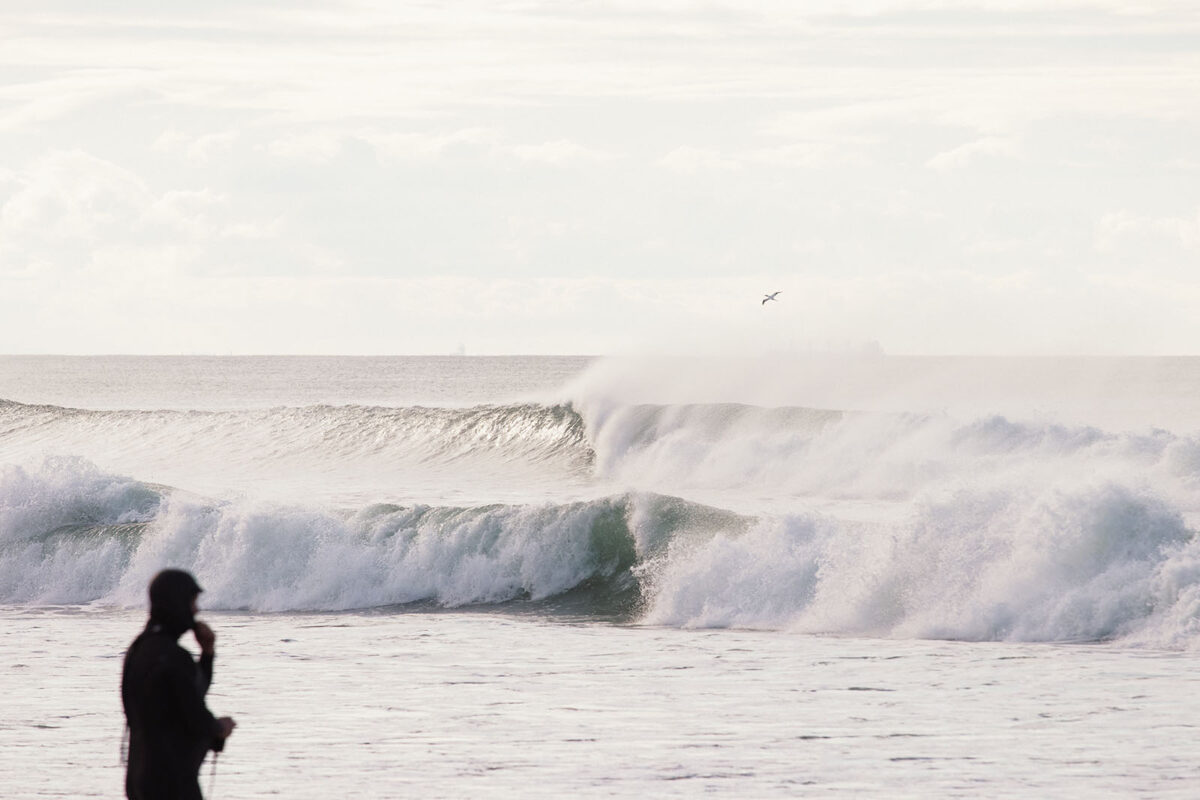
Lastly, never underestimate the strength of the New Zealand sun. High UV levels call for plenty of sunscreen – you’ll want to protect your skin from the harsh sun rays that have led to high local skin cancer rates.
The Challenges
New Zealand isn’t the cheapest surf destination, especially when compared to places like Bali or Mexico. But what it lacks in budget-friendly pricing, it makes up for with its incredible surf, spectacular landscapes, and safe environment.
The weather can be unpredictable, adding a little spice to your surfing adventure. However, seasoned surfers know that sudden changes in weather can create unexpectedly perfect conditions, so it could work to your advantage!
Reaching New Zealand might involve a long journey and can be expensive from many parts of the world. But once you’re there, the vast array of surf spots and the unparalleled beauty of the country make every penny and every second of travel time worthwhile.

Best Places to Surf
Here are 15 destinations to whet your appetite. Remember that each of these will likely have a passionate local surf community, so be respectful, and you’ll have a blast. Remember, you can also usually paddle out at nearby breaks for uncrowded — sometimes empty — surf. Kiwis tend to paddle out directly in front of the local car park, so walk down the beach to get some space.
Here are 15 NZ surf spots that are worth checking out.
- Raglan (Manu Bay): World-famous left-hand point break with rides up to 500m long.
- Location: Waikato region, North Island
- How to get there: About a two-hour drive south from Auckland
- Wave type: Long, peeling left-hand point break
- Ideal board: Longboard or shortboard depending on your style
- Hazards: Can get crowded, rocky bottom, you need to jump off rocks to get to the breaks
- Ahipara (Shipwreck Bay): An excellent left-hand point break offering long rides.
- Location: Northland region, North Island
- How to get there: Around four hours drive north of Auckland
- Wave type: Left-hand point break
- Ideal board: Shortboard
- Hazards: Remote location, can be rocky
- Taranaki (Stent Road): Renowned right-hand reef break.
- Location: Taranaki region, North Island
- How to get there: A four to five-hour drive south of Auckland
- Wave type: Right-hand point break
- Ideal board: Shortboard
- Hazards: Rocky bottom, can get crowded but there are lots of not so secret spots nearby
- Mount Maunganui: Known for its great vibes and good waves. Ask a local to take you to “the island” (Matakana Island) for premium waves on the right day
- Location: Bay of Plenty region, North Island
- How to get there: About a three-hour drive southeast of Auckland
- Wave type: Beach break
- Ideal board: Depends on conditions, longboard at Mussel Rock, a shortboard or hybrid for everyone else
- Hazards: Can get crowded in the summer, rips can be treacherous
- Piha: Known for its powerful waves and stunning black-sand beach.
- Location: Auckland region, North Island
- How to get there: About a 45-minute drive west of Auckland
- Wave type: Beach break
- Ideal board: Shortboard
- Hazards: Crazy strong currents, rips
- Kaikoura: Mangamaunu is a picturesque spot with a right-hand point break.
- Location: Canterbury region, South Island
- How to get there: Two-hour drive north from Christchurch
- Wave type: Right-hand point break
- Ideal board: Shortboard
- Hazards: Cold water, remote location, watch out for cars and trains when crossing the road
- Westport (Tauranga Bay): Consistent waves with beautiful scenery.
- Location: West Coast region, South Island
- How to get there: About a four-hour drive west from Christchurch
- Wave type: Beach break
- Ideal board: Longboard or shortboard depending on conditions
- Hazards: Cold water, remote location
- Dunedin (St Clair): Offers a good mix of wave types, from beach breaks to point breaks.
- Location: Otago region, South Island
- How to get there: A five-hour drive south from Christchurch
- Wave type: Beach break
- Ideal board: Shortboard
- Hazards: Cold water, rips
- Te Arai: A clean, sandy beach with a variety of peaks.
- Location: Auckland region, North Island
- How to get there: About a 90-minute drive north from Auckland
- Wave type: Beach break
- Ideal board: Shortboard or longboard depending on conditions
- Hazards: Can get crowded, rips
- Gisborne (Wainui Beach): An exposed beach and reef break with consistent surf.
- Location: Gisborne region, North Island
- How to get there: Around six hours drive southeast of Auckland
- Wave type: Beach break
- Ideal board: Shortboard
- Hazards: Rips, can get crowded
- Whangamata: Famous for its long left-hand breaks over sandbars.
- Location: Waikato region, North Island
- How to get there: About a two-hour drive east of Auckland
- Wave type: Beach break
- Ideal board: Longboard or shortboard depending on conditions
- Hazards: Rips, can get crowded in summer
- Christchurch (Sumner Beach): Good for beginners with a sand and pebble beach.
- Location: Canterbury region, South Island
- How to get there: A 15-minute drive east of Christchurch city center
- Wave type: Beach break
- Ideal board: Longboard
- Hazards: Rips, cold water
- Great Barrier Island (Medlands Beach): Remote location with uncrowded waves.
- Location: Auckland region, North Island
- How to get there: A ferry ride from central Auckland, rent a car when you’re there
- Wave type: Beach break
- Ideal board: Shortboard or longboard depending on conditions
- Hazards: Remote location, limited facilities
- Mangawhai Heads: Offers good waves on both small and big swell days.
- Location: Northland region, North Island
- How to get there: About a two-hour drive north from Auckland
- Wave type: Beach break
- Ideal board: Shortboard
- Hazards: Strong currents, rips
- Muriwai: Another black-sand beach offering consistent surf.
- Location: Auckland region, North Island
- How to get there: About an hour drive west of Auckland
- Wave type: Beach break
- Ideal board: Shortboard
- Hazards: Strong rips, can be crowded
Remember to check the surf conditions and respect the local surf etiquette when visiting these spots. Watch a local to learn how to paddle out, especially when rock jumps are required. Paddle out to the shoulder and let the locals have the pick of waves. Soon enough, you’ll find your way into position, and they’ll respect that you took your time. Don’t bust out a foil or SUP at a busy break if you want to make friends.
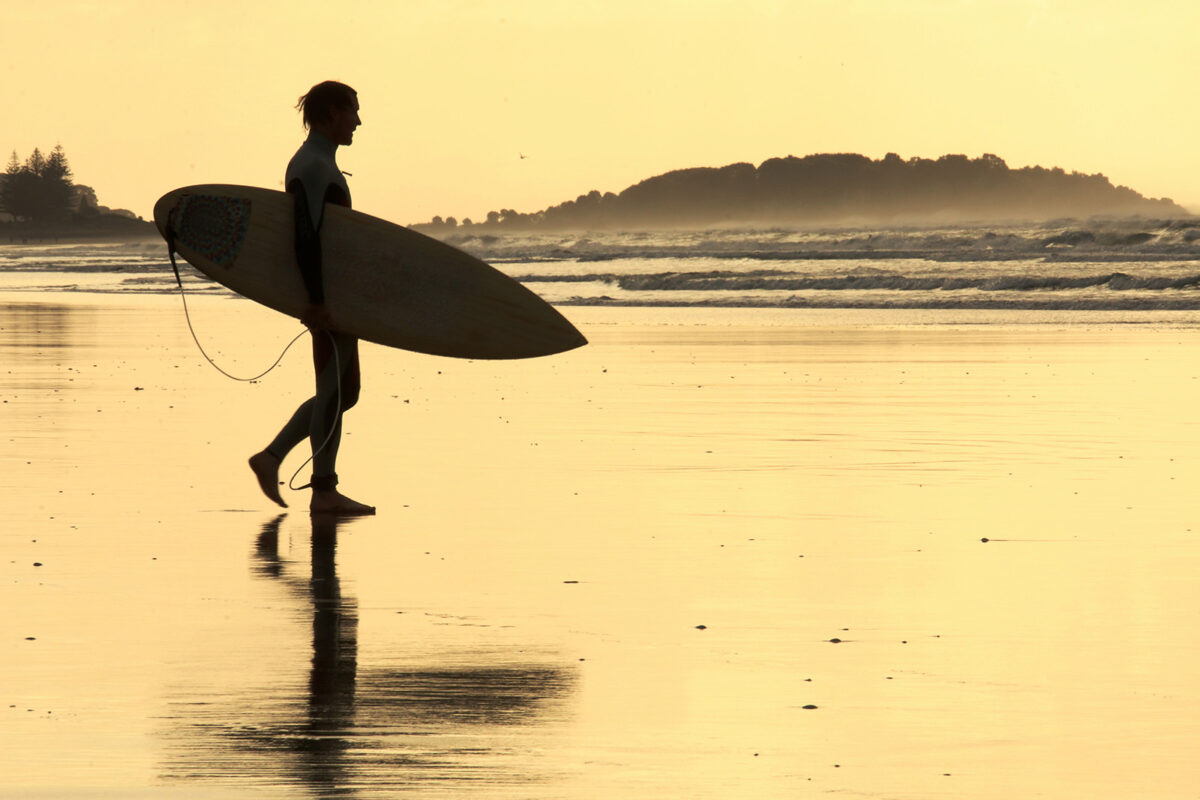
Respect the Ocean: General Hazards and Safety Tips
New Zealand’s pristine beaches and quality surf breaks make it a surfer’s paradise, but like any ocean environment, it has its share of hazards. Understanding these risks is the first step to ensuring you can safely enjoy the country’s epic waves. Here are a few general hazards to be aware of:
Rip Currents: These strong currents can quickly pull swimmers and surfers away from the shore. If caught in a rip, don’t try to swim against it. Instead, swim parallel to the shore until you’re out of the rip, then swim back to the beach. Some New Zealand beaches have signs indicating the presence of rips, but take a few minutes to assess conditions before jumping in.
Rocks and Reefs: Many New Zealand surf breaks are over rocky reefs, which can lead to injuries. Always check the local conditions and ensure you know what’s underneath you. If you’re unsure, ask a local or look for maps and signage.
Sharks: While encounters with sharks are relatively rare in New Zealand, they do occur. The country is home to several species, including great whites. However, the risk is low, and attacks are extremely rare. To minimize the risk, avoid surfing alone, at dawn, or at dusk, and don’t enter the water if you see bait fish or birds feeding. You could always get a Shark Banz repellent device.
Strong Waves and Swells: The power of New Zealand’s waves is part of their appeal, but it can also be hazardous for inexperienced surfers. Always surf within your abilities, and when in doubt, don’t paddle out.
Cold Water: Particularly in the South Island and during winter, the water can be quite cold. Wearing a good quality wetsuit, and potentially booties, gloves, and a hood, can help you stay comfortable and prevent hypothermia. You could also get yourself a wetsuit dryer.
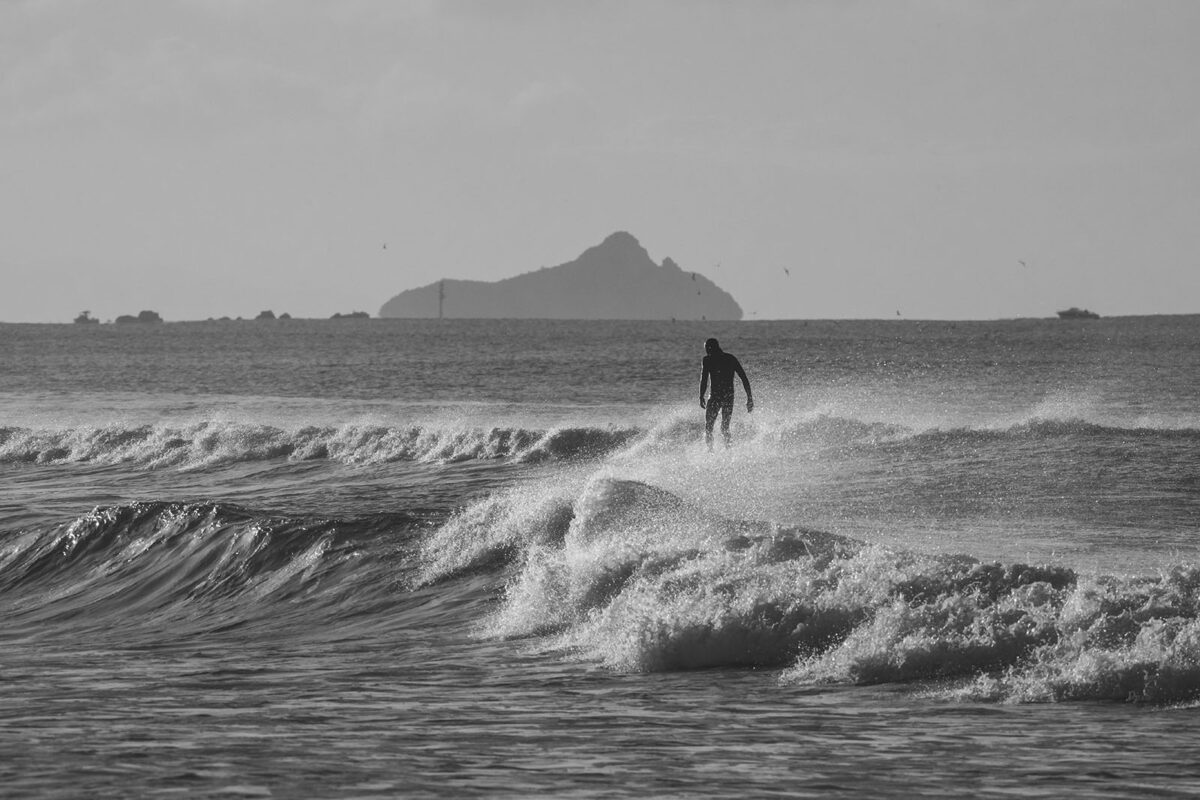
Sun Exposure: New Zealand’s sun is deceptively harsh, and the reflection from the water can intensify its effects. Always wear a high-SPF, water-resistant sunscreen, and consider wearing a surf hat and UV-protective clothing.
Marine Hazards: Apart from sharks, New Zealand’s marine life includes potentially hazardous species like stingrays and jellyfish. Injuries are rare but can be serious. Be aware of your surroundings and seek immediate medical attention if you’re injured. Don’t pat or approach seals on the beach. Even if they look injured, they’re often just relaxing, so give them space.
Remember, safety should be a priority when surfing. Check the local conditions, be aware of potential hazards, and never surf alone in remote areas. It’s also a good idea to let someone know where you’re going and when you plan to return.
Catch the Perfect Wave: Checking the Surf Conditions
Before you paddle out, it’s essential to understand the local surf conditions. You’ll want to consider factors such as swell size, direction, wind speed and direction, and tide times. Here are some resources that can help you find the perfect wave:
Surfline: One of the most popular global surf forecasting sites, Surfline provides detailed surf reports and forecasts for surf breaks all around New Zealand. It provides information about wave height, swell direction, wind, and tide. Plus, they have live cams at popular breaks, so you can check out the conditions in real time.
Windy App: While not exclusively for surfing, Windy provides comprehensive information on wind and weather conditions, which are crucial for predicting good surf. It offers detailed, interactive maps that allow you to check out current and forecasted conditions at your chosen location.
MetService: New Zealand’s national meteorological service provides country-wide weather and marine forecasts, which can be helpful in predicting surf conditions.
Local Surf Shops and Communities: Never underestimate the value of local knowledge. Staff at local surf shops and other surfers are often willing to share advice about the best spots and the ideal conditions. Plus, you’ll get to hear about it in the charming Kiwi accent!
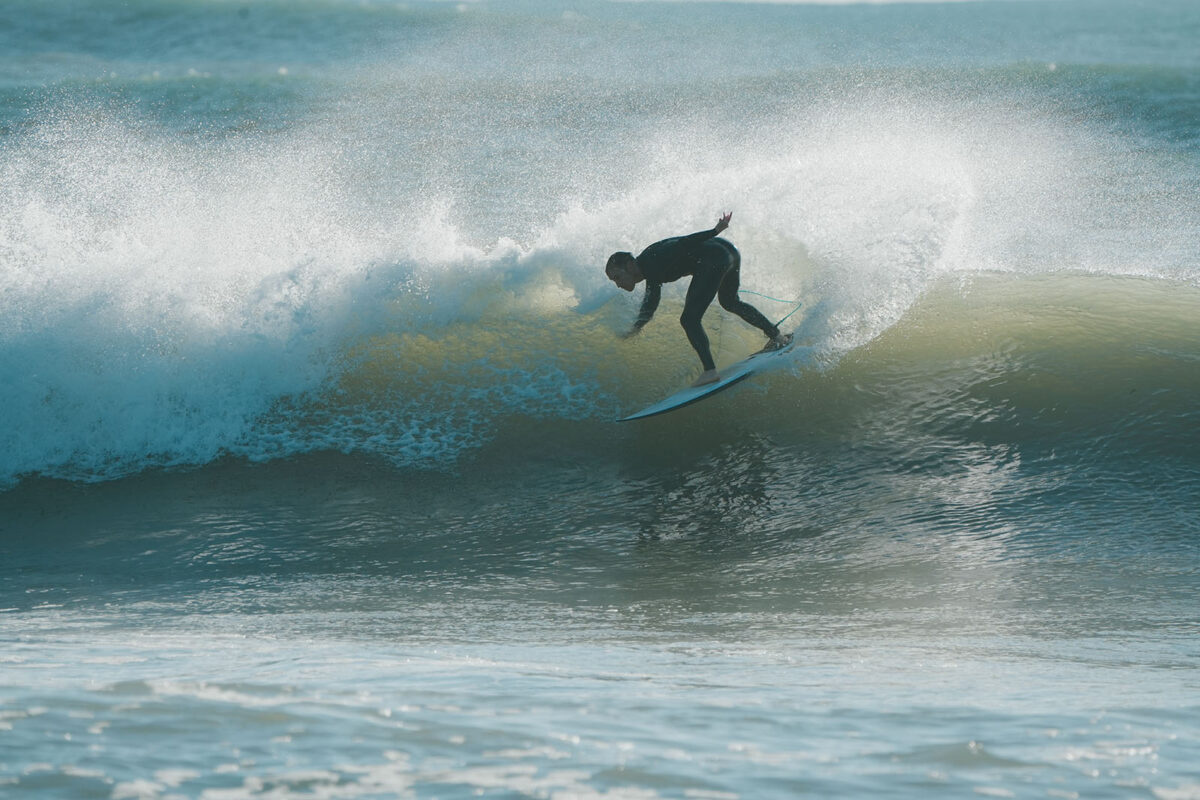
Rest and Recharge: Accommodation Options in New Zealand
Whether you’re looking for a luxurious retreat or budget-friendly lodging, New Zealand offers a range of accommodations to suit every traveller’s needs. Here are some options to consider for your surf trip:
Airbnb: This online marketplace connects travellers with local hosts offering a variety of accommodation types. Whether you want a private room, a seaside cottage, or an entire home, Airbnb offers numerous options in every corner of New Zealand.
Bookabach: This New Zealand-based holiday home rental service (bach is short for “bachelor pad”) is another excellent choice. With a wide range of properties from beachfront baches to rural retreats, Bookabach gives you a chance to live like a local.
Booking.com: For those who prefer the familiarity and conveniences of hotels, Booking.com offers an extensive selection of hotels, motels, and bed and breakfast options across New Zealand.
Holiday Parks and Campgrounds: If you’re travelling in a campervan, consider staying at holiday parks and campgrounds. They offer amenities such as laundry facilities, kitchen areas, and sometimes even Wi-Fi. Top 10 Holiday Parks and Department of Conservation (DOC) campsites are popular choices.
Hostels: Budget travellers and solo adventurers might prefer the sociable atmosphere of hostels. With shared dormitories or private rooms, hostels like those in the YHA New Zealand network provide affordable accommodation and the chance to meet other travellers.
Luxury Lodges: For a splurge, consider staying in a luxury lodge. These upscale accommodations, often situated in breathtaking locations, offer world-class service, gourmet dining, and unique experiences. Examples include Huka Lodge in Taupo and The Lodge at Kauri Cliffs in Northland.
Remember, accommodation in popular surf spots and tourist destinations can fill up quickly, especially during the peak summer season. It’s wise to book your accommodations in advance to secure your preferred lodging.
New Zealand’s welcoming spirit extends from its surf breaks to its accommodation options, ensuring you’ll have a comfortable stay no matter your travel style or budget. Sweet as!
Exploring Aotearoa: When The Surf Is Flat
New Zealand is more than its world-class waves. Here’s what you can do on those rare days when the surf is flat.
Queenstown Adventure: Known as the adventure capital of the world, Queenstown offers a plethora of adrenaline-pumping activities. From bungee jumping to white-water rafting and skydiving, there’s never a dull moment in this vibrant city.
Hobbiton Movie Set Tour: Movie buffs, particularly fans of the Lord of the Rings and Hobbit trilogies, will appreciate a visit to the Hobbiton Movie Set in Matamata. Experience the enchanting world of Middle-earth and enjoy a pint at the Green Dragon Inn.
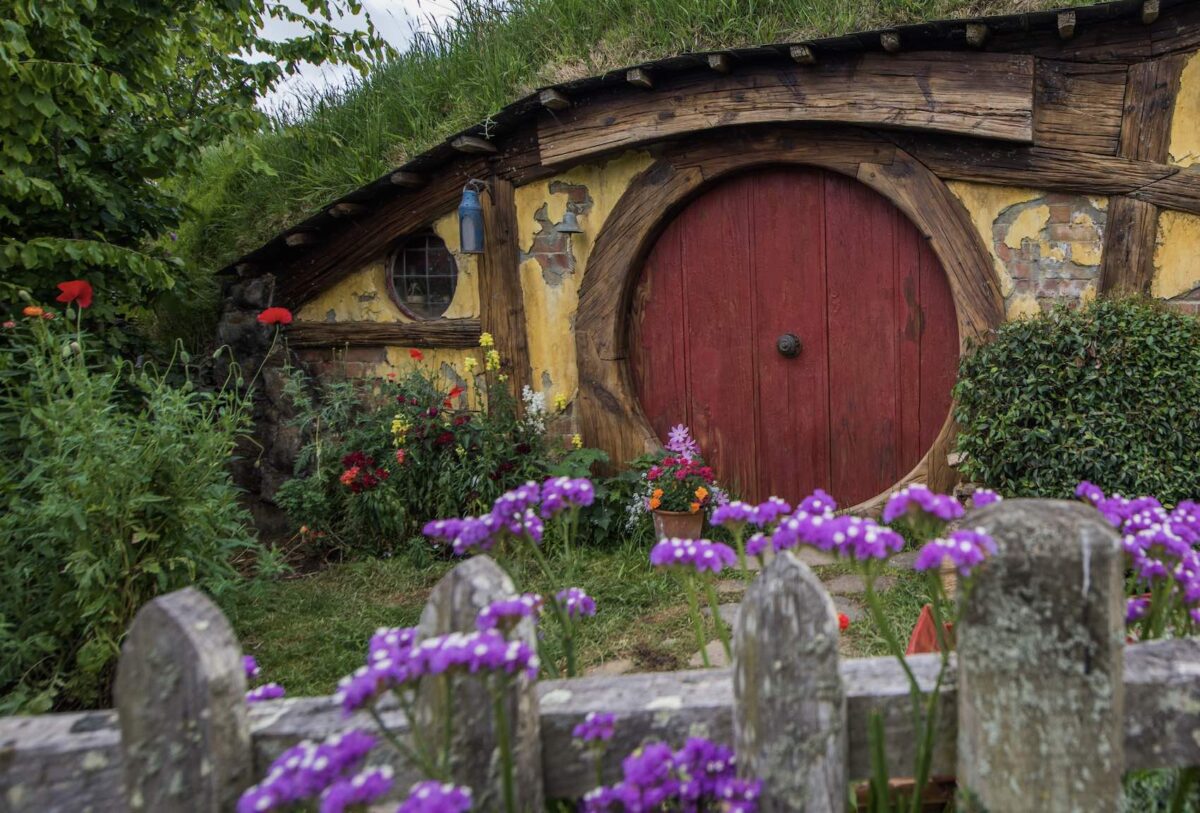
Image Sourse: hobbitontours.com
Explore Kiwi Culture: Visit the Te Papa Tongarewa Museum in Wellington or the Waitangi Treaty Grounds in the Bay of Islands to learn about New Zealand’s rich Maori culture and colonial history.
Gear Up: Where to Get Surf Equipment
New Zealand boasts an impressive array of surf shops where you can find everything from surfboards and wetsuits to surf wax and fins. Whether you’re after the latest gear or simply need some advice, these local stores can cater to all your surfing needs:
Backdoor Surf: With multiple locations around the country, including Auckland, Hamilton, and Wellington, Backdoor is one of New Zealand’s largest surf retailers. They offer a wide range of gear from leading surf brands.
Ultimate Surf & Skate: Located in Auckland, Ultimate Surf & Skate is a staple of the local surf community. They have a wide range of surfboards, wetsuits, and other gear. Plus, they’re known for their friendly service and expert advice.
Raglan Surf Emporium: If you’re in the Waikato region, don’t miss this shop located in the heart of Raglan. They offer a great selection of gear, and given the store’s proximity to some of the country’s best surf breaks, you’re sure to find equipment suited to local conditions. Visit site.
Saltwater Surf: Based in Mount Maunganui, Saltwater Surf is a favourite among Bay of Plenty surfers. They have a great range of surfboards, accessories, and clothing.
Sadhana Surfboards: In Christchurch, Sadhana not only handcrafts excellent surfboards but also boasts a quality surf shop offering surf gear and apparel.
Hive Swimwear NZ and Escape Surfboards: In Whakatane, this company offers a comprehensive range of surfboards and also specializes in surf-ready swimwear.
Ocean Outfitters: Located in Gisborne, Ocean Outfitters is a must-visit for any surfer in the area. They stock a wide range of surf gear and offer friendly service.
Fiordland Frontier Supplies: If you find yourself in the Fiordland region of the South Island, this Te Anau-based store offers surf gear among a host of other outdoor adventure supplies. Visit site.
The Boardroom: Based in Wellington, The Boardroom is a locally owned and operated shop offering a wide range of surf gear, from beginner to pro levels.
Wilderness Surf: If you’re in the Otago region, check out Wilderness Surf in Dunedin. They have a wide range of surf gear and pride themselves on their knowledgeable and friendly staff.
Shaping the Experience: New Zealand Surfboard Manufacturers
New Zealand’s vibrant surfing culture is complemented by a host of local surfboard manufacturers that offer everything from performance shortboards to classic longboards and innovative designs. Here are a few notable Kiwi surfboard makers to consider for your next ride:
Raglan Surf Co.: Located in the surf mecca of Raglan, this company handcrafts its boards with a focus on performance and quality. Their range covers all types of boards, from shortboards to longboards and everything in between. Visit site.
Glide Surfboards: Specialising in handcrafted longboards, Glide Surfboards operates out of Mount Maunganui. Their boards combine traditional aesthetics with modern design principles.
Aloha Surfboards: This Auckland-based company has been crafting boards for over 30 years. They offer a wide range of options, including custom designs to match your specific needs. Visit site.
Underground Surf: Based in Orewa, north of Auckland, Underground Surf is known for its innovative designs. They produce a variety of boards, including performance shortboards, hybrids, and longboards.
Carve Surfboards: Operating out of Christchurch, Carve Surfboards has been shaping boards since 1989. They offer a variety of designs, including custom-made options.
Hive Swimwear NZ and Escape Surfboards: Located in Whakatane, this company not only offers surfboards but also specializes in swimwear for surfing. Escape Surfboards, their surfboard arm, focuses on custom-made boards.
Barron Surfboards: Based in Gisborne, Barron Surfboards is a fixture in the local surfing community. They offer a range of boards and pride themselves on their handcrafted quality.
Murdey Surfboards: These classic longboards and shortboards are handcrafted in Te Awanga in Hawke’s Bay. They’re known for their sleek designs and excellent craftsmanship. Visit site.
Sadhana Surfboards: With roots firmly in Christchurch, Sadhana Surfboards offers a blend of both traditional and modern designs with a unique Kiwi twist. Their boards are known for excellent craftsmanship and innovative designs, and they have a wide variety to choose from. Whether you’re after a retro fish, a classic longboard, or a high-performance shortboard, Sadhana has something to suit your style and skill level.
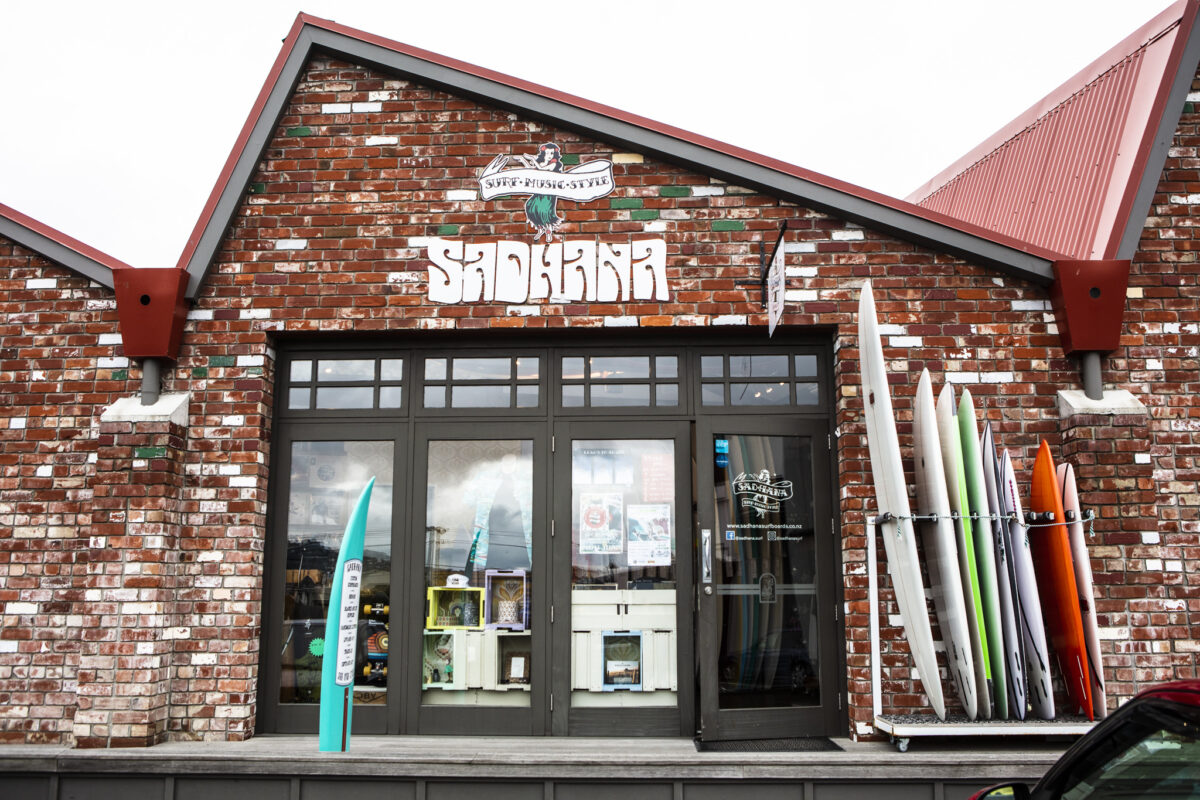
Remember, buying locally not only supports the local economy but also reduces the carbon footprint of your board. Plus, local shapers have the best knowledge of the types of boards suited to New Zealand’s unique wave conditions.
Wheels for the Waves: Getting Your Transport
To chase the best waves around the country, you’ll need reliable transport. Here are some options:
TradeMe: New Zealand’s largest online marketplace where you can buy or sell just about anything, including cars and campervans. Visit website.
Campervan Rental Companies: There are numerous companies where you can rent a campervan for your journey. Explore options like JUCY, Britz, or Escape Rentals to find one that fits your budget and needs.
Getting Around: Buses, Planes, and More
For longer journeys, or when you simply want a break from driving, here’s how you can get around:
Intercity Buses: New Zealand’s most extensive bus network, offering economic travel across the country with various scenic routes. Visit website.
Air New Zealand: For faster transit between islands or distant locations, consider Air New Zealand, the country’s national airline.
Stay Connected: Mobile Network Providers
Staying connected is essential, especially when you’re on the road. Here’s what we recommend for mobile network providers:
Spark: If you’re planning to surf remote spots or travel around rural areas, Spark offers the best coverage. They have various plans to suit different data and call needs. You can pick up a SIM card at the airport in the Duty Free hall.
Knowledge is Power: Surf Guides, Books, and Videos
Before you hit the waves, consider these resources to help you understand the local surf conditions and improve your skills:
The Complete Guide to Surfing in New Zealand: This comprehensive guidebook covers all you need to know about the best surf spots in New Zealand.
NZ Surf: The Collection Vol.1: This stunning visual documentary showcases New Zealand’s unique surf culture and landscapes.
YouTube: There’s a wealth of knowledge on YouTube. Channels like “Surf Simply” offer great instructional videos for surfers at all levels.
Remember, while New Zealand is a surfer’s paradise, it’s also so much more. Enjoy the waves, but don’t miss out on the many other amazing experiences this beautiful country has to offer. Happy surfing, and kia ora!
Savor the Flavors: Food and Drink in New Zealand
From fresh seafood to delectable pastries and world-class wines, the culinary scene in New Zealand is as diverse as its landscapes. The Kiwis, blessed with a rich agricultural heritage and surrounded by the bountiful sea, offer a palette of flavors that will satisfy even the most discerning gourmand.
Fish and Chips: A Coastal Classic
A trip to New Zealand wouldn’t be complete without tasting the country’s favorite seaside snack: fish and chips. Freshly caught and expertly fried, the fish is served alongside chunky chips, resulting in a simple yet immensely satisfying dish. Just remember, the Kiwi pronunciation might make you giggle – it sounds more like “fush and chups”!
World-Class Wines
New Zealand’s climate, particularly in regions like Marlborough and Central Otago, creates the perfect conditions for vineyards to thrive. Kiwi wineries are renowned for their Sauvignon Blanc and Pinot Noir. Wine enthusiasts will appreciate a visit to one of the many vineyards dotting the countryside, where you can sample a variety of wines with stunning scenic backdrops. Our favorite brand is Selaks — mid-range but excellent quality.
Lamb Shanks: The Kiwi Comfort Food
Lamb is a staple of the New Zealand diet, and a well-cooked lamb shank is something of a Kiwi tradition. Slow-cooked until the meat is falling off the bone and often served with mashed potatoes and fresh vegetables, it’s a hearty dish perfect for a cold day.
Fresh Salmon
New Zealand’s clear waters are home to some of the finest salmon in the world. Whether it’s grilled, smoked, or served as sashimi, the flavor of fresh Kiwi salmon is unparalleled. If you’re visiting the South Island, be sure to drop by one of the salmon farms for a taste of this local delicacy.
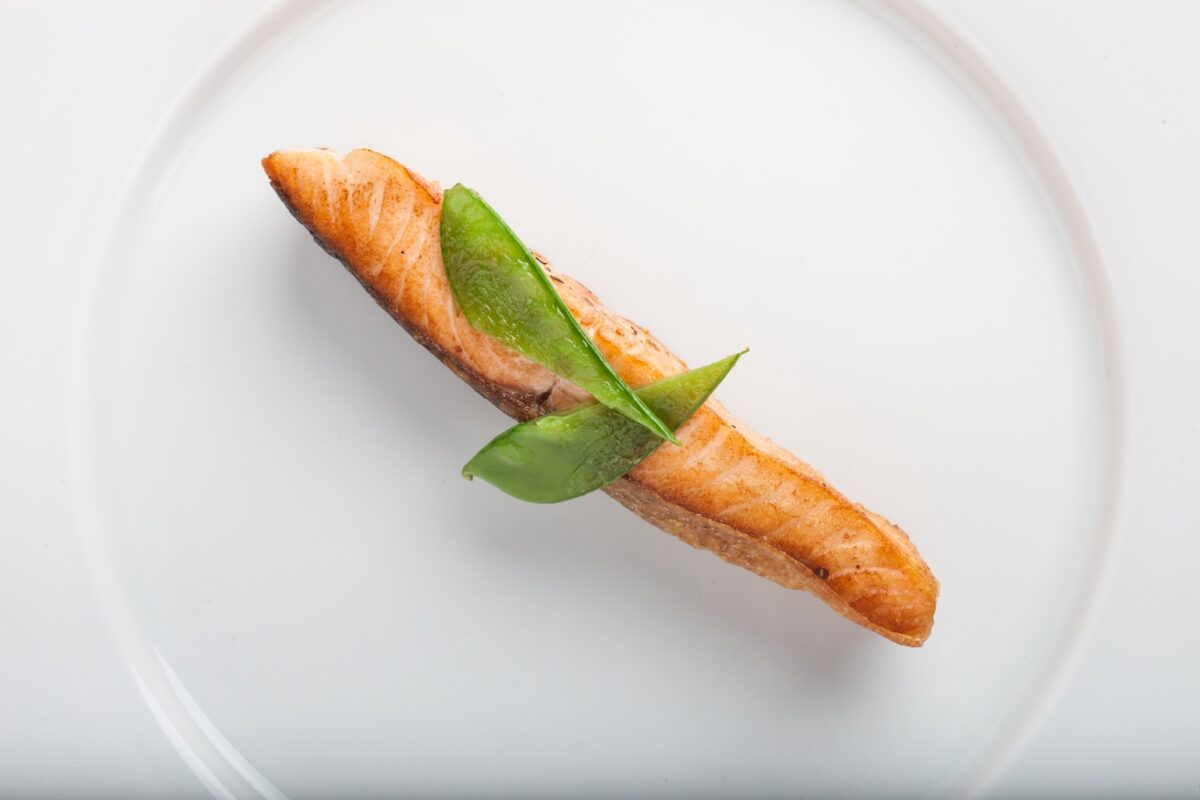
Venison: A Taste of the Wild
New Zealand’s landscape is home to an abundance of deer, making venison a popular and sustainable choice for meat lovers. Kiwi venison is celebrated for its lean, rich, and slightly sweet flavor. The meat is incredibly versatile and can be prepared in a variety of ways, from seared steaks to slow-cooked stews.
One of the notable purveyors of high-quality venison is Silver Fern Farms. They provide a range of premium venison cuts that are not only tender and flavorful but also sourced through ethical, sustainable farming practices. Their venison is a must-try for any carnivore, offering a taste that is distinctively New Zealand.
Cheese: Dairy Delights from the Land of the Long White Cloud
New Zealand’s verdant pastures and world-renowned dairy industry produce a variety of high-quality cheeses. From creamy brie and camembert to sharp cheddar and blue, the assortment of New Zealand cheeses is both delightful and impressive. For a uniquely Kiwi cheese experience, try kahikatea cheese, which is wrapped in the bark of the kahikatea tree, giving it a distinctive earthy flavor.
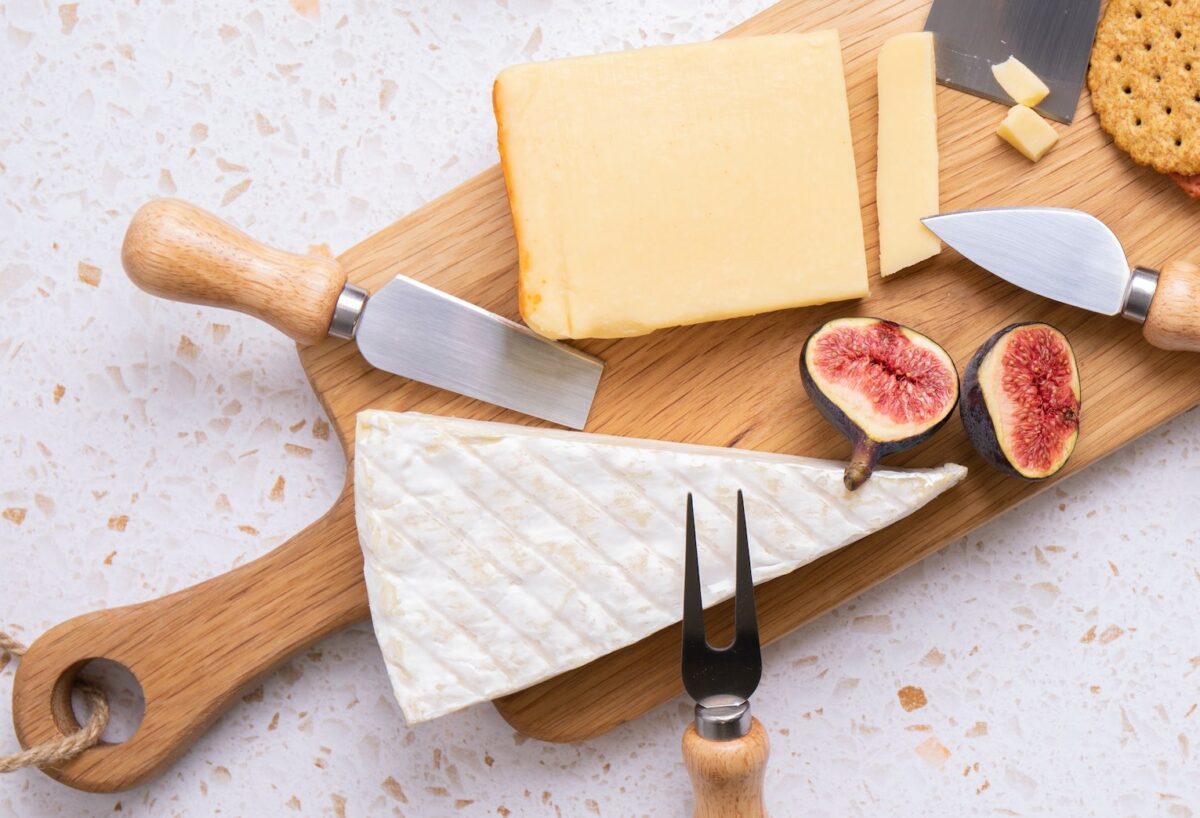
Craft Beer: A Hoppy Revolution
The Kiwi craft beer scene has exploded in recent years, with a plethora of breweries across the country creating innovative and flavorful brews. From rich stouts and porters to refreshing lagers and hop-forward IPAs, there’s a New Zealand craft beer to suit every palate. Cities like Wellington and Nelson are considered hotspots for craft beer, with numerous breweries and beer festivals. Be sure to try some local favorites like Garage Project, Tuatara, and 8 Wired.
Additional Culinary Delights
The food journey in New Zealand doesn’t end here. Be sure to try the country’s unique version of a meat pie, a hearty snack found in every corner store, or ‘dairy’ as Kiwis call them. New Zealand’s rich dairy industry also means high-quality cheeses are readily available. From creamy camembert to unique kahikatea cheese, you’re sure to find a new favorite.
New Zealand is also a leading producer of venison, with companies like Silver Fern Farms providing premium cuts from ethically raised deer. Whether served as a tender steak or slow-cooked in a rich stew, Kiwi venison offers a uniquely robust and slightly sweet flavor that’s not to be missed.
The craft beer scene in New Zealand is thriving, with a wide array of local breweries crafting everything from hoppy IPAs to rich stouts. Breweries such as Garage Project and Tuatara have helped place New Zealand on the global craft beer map.
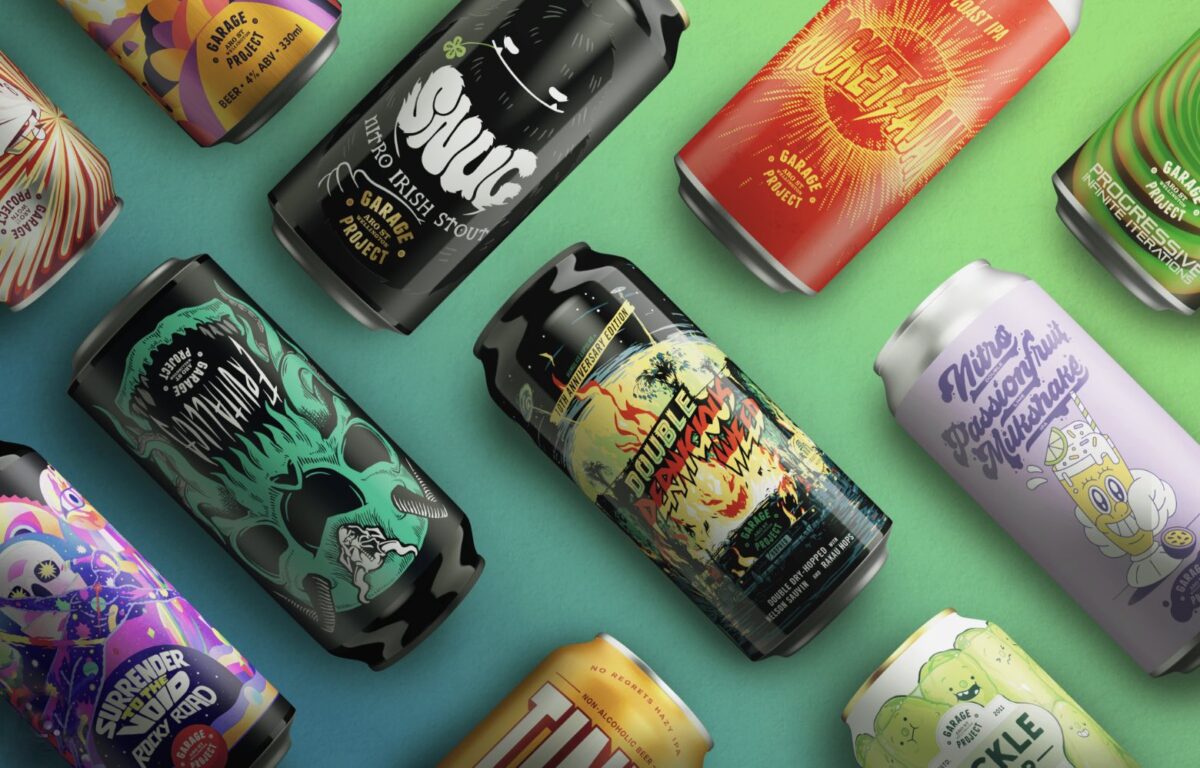
And we can’t forget the iconic Kiwi dessert, the Pavlova, a meringue-based cake with a crisp crust and a soft, light inside, usually topped with fresh fruits and whipped cream. The Pavlova is often at the center of a friendly rivalry with Australia, as both nations claim it as their own.
Whether you’re dining in a gourmet restaurant in Auckland, enjoying a winery lunch in Napier, or eating fish and chips on a beach in the Coromandel, the Kiwi culinary scene promises to be a delight for your taste buds. So, grab your cutlery and prepare to embark on a gastronomic journey through New Zealand. Kia Ora and Kapai!
Kiwi greetings and slang
If you’re heading to New Zealand and want to fit in with the locals, you might want to familiarize yourself with some commonly used Kiwi slang and greetings. Here’s a small collection:
Greetings:
- Kia Ora: This is probably the most well-known Maori greeting, often used to say ‘hello’.
- Gidday: This is a very informal Kiwi greeting, equivalent to “Hello” or “Hi”.
Commonly used words and phrases:
- Bach: Pronounced ‘batch’, it’s a term for a small holiday home, often near the beach.
- Bro: Short for ‘brother’, it’s a casual term for ‘mate’ or ‘friend’.
- Chur: This is an expression of gratitude or agreement, similar to ‘cool’ or ‘thanks’.
- Dairy: This refers to a local convenience store, similar to a corner shop.
- Mean: Generally means “great” — for example, “that was a mean wave, bro”
- Jandals: The Kiwi term for flip-flops or thongs.
- Togs: This is what Kiwis call their swimsuits.
- Yeah Nah: A uniquely Kiwi phrase, it generally means ‘no’ or expresses polite disagreement. The opposite, “Nah yeah”, means ‘yes’.
- Sweet as: This phrase means ‘cool’, ‘good’, or ‘okay’. The ‘as’ can be added to many adjectives in Kiwi slang.
- Pakeha: A Maori language term for New Zealanders of European descent.
- Wop-wops: This refers to a remote, out-of-the-way place, similar to the Australian term ‘back of Bourke’.
- Hard yakka: This means hard work. The term ‘yakka’ comes from the Aboriginal language.
- Kapai: A Maori term meaning ‘good,’ ‘well done,’ or ‘all is well’.
- Whanau: Maori for family.
Remember, while it can be fun and respectful to try and use local slang when you visit a place, make sure you’re using it correctly to avoid any misunderstanding.
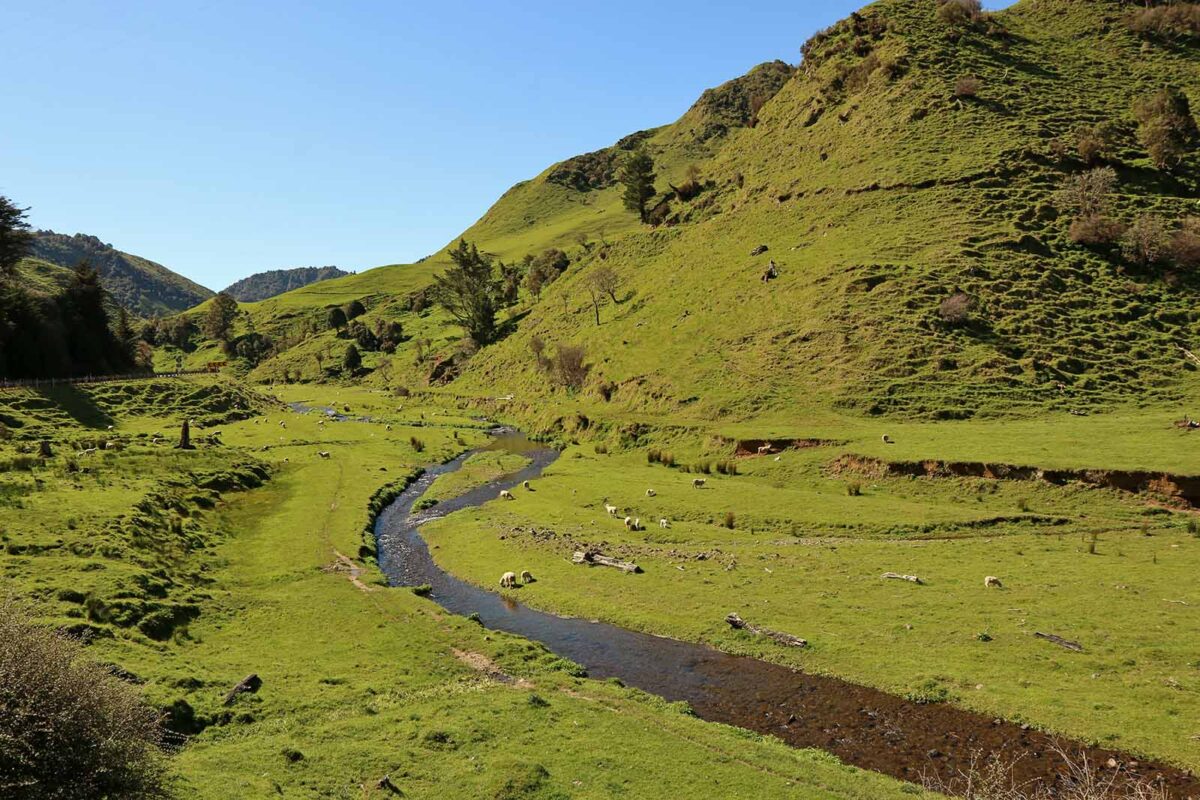
Soundtrack to Your Adventure: Kiwi Music for the Road
New Zealand’s music scene is as diverse as its landscape, producing an array of artists that span multiple genres. Whether you’re cruising along the coast, heading to the next surf spot, or chilling after a session, this selection of Kiwi music will perfectly complement your New Zealand adventure:
Six60: A Kiwi favorite, Six60’s blend of rock, pop, and roots has made them one of the biggest acts in New Zealand. Songs like “Don’t Forget Your Roots” and “Vibes” provide the perfect soundtrack for a road trip.
Katchafire: A celebrated reggae band hailing from Hamilton, Katchafire’s music is perfect for relaxing after a long day in the surf. With tracks like “Giddy Up” and “On The Road Again,” they’re a must-add to your playlist.
Fat Freddy’s Drop: Combining elements of dub, reggae, soul, jazz, and techno, Wellington’s Fat Freddy’s Drop provides a distinctive, chill soundtrack. Try “Wandering Eye” or “Roady” for starters.
Lorde: This Grammy award-winning artist from Auckland has made waves globally with her unique pop sound. Tracks like “Green Light” and “Royals” are great for sing-alongs on the road.
The Black Seeds: Another great Wellington band, The Black Seeds offer a mix of reggae and funk that’s perfect for any road trip playlist. Check out songs like “So True” and “One By One.”
Bic Runga: One of New Zealand’s most respected singer-songwriters, Bic Runga’s melodic pop is a great accompaniment for those quieter moments. Songs like “Sway” and “Suddenly Strange” are classics.
Broods: This Nelson-born brother-sister duo offer a blend of dreamy pop and electropop. Tracks like “Bridges” and “Peach” will keep your spirits high on the road.
Shapeshifter: If you’re into drum and bass, don’t miss out on Christchurch’s Shapeshifter. High-energy tracks like “Electric Dream” and “Monarch” will get you pumped for your next surf session.
Crowded House: Although trans-Tasman, they’re often claimed by Kiwis due to band members hailing from New Zealand. With timeless hits like “Don’t Dream It’s Over” and “Weather With You,” Crowded House adds a nostalgic touch to your journey.
The Exponents: This rock band is a New Zealand classic, perfect for cruising along the coast. Add “Why Does Love Do This To Me” to your playlist for a true Kiwi sing-along.
This selection of Kiwi music not only makes the perfect soundtrack for your New Zealand adventure but also allows you to immerse yourself in the country’s vibrant music scene.
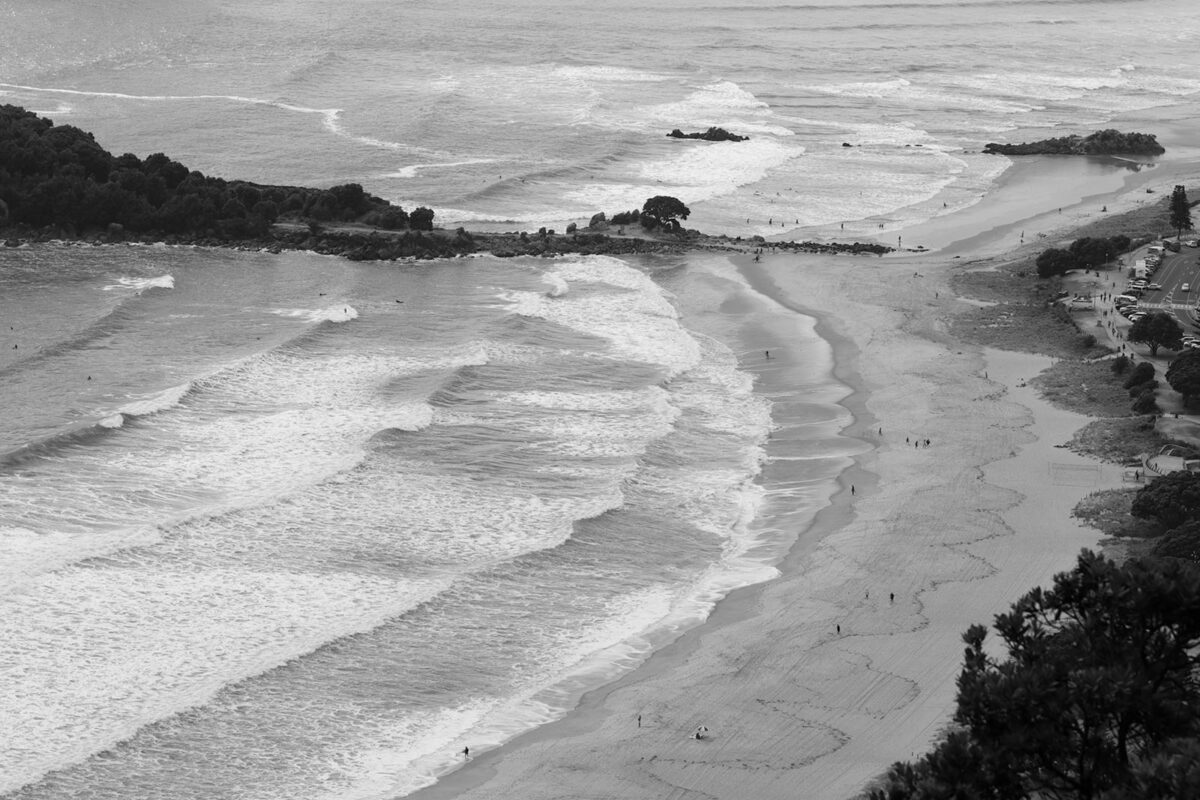
Drug Policies
New Zealand has strict laws regulating the use, possession, cultivation, and trafficking of drugs. Drugs such as cannabis, MDMA, cocaine, and others are classified as Class A, B, or C drugs under the Misuse of Drugs Act 1975, with penalties ranging from fines to imprisonment depending on the class and the nature of the offence.
Despite recent discussions around the decriminalization of cannabis, recreational use of cannabis remains illegal. Medical use of cannabis is permitted under specific circumstances with prescription from a licensed medical practitioner. Contact the Cannabis Clinic if you’re after a tele-consultation for high-quality flower or CBD oil to soothe your pains, alleviate anxiety or improve sleep.
Driving under the influence of drugs is illegal and carries severe penalties, including fines, imprisonment, and disqualification from driving. New Zealand police have the power to conduct roadside drug tests if they suspect a driver is under the influence.
Medical Assistance
New Zealand has a high standard of healthcare and medical services. Both public and private hospitals are equipped to deal with emergencies. In an emergency, dial 111 for ambulance services.
Accidents and emergencies related to surfing, such as injuries or water-related emergencies, can typically be handled by local hospitals or emergency clinics. However, keep in mind that healthcare services may be limited in rural or remote areas.
If you’re visiting New Zealand, it’s highly recommended to have comprehensive travel insurance that covers healthcare. While New Zealand’s Accident Compensation Corporation (ACC) provides accident insurance for all, including visitors, it does not cover illnesses or disrupted travel plans.
Healthline
If you’re feeling unwell and unsure whether you need to see a doctor, you can call Healthline at 0800 611 116. This free service operates 24/7 and is staffed by registered nurses who can provide health advice.
Remember, while New Zealand is generally a safe and secure country, it’s important to be aware of the local laws and health services to ensure a smooth and enjoyable surfing adventure.
Conclusion
We hope this article equips and inspires you for a trip to the land beneath the land downunder. With one-third of the coastline of Australia, and far fewer Aussies
You only live once, so make sure that your bucket list includes an Aoteroa adventure. You’ll never regret peering up at the spectacular landscapes as you float in remote lineups on the far edge of the world.
From Ahipara to the Mahia peninsula, from Dunedin to Lyall Bay (a sweeping bay beside Wellington airport), there is a spot just waiting for you, the intrepid surfer.
Kia Ora, and enjoy your trip to New Zealand!
P.S. Seeing as you made it this far, if you would like some advice, you’re welcome to reach out to us at [email protected] if you do make it to NZ. We’re happy to provide a tip or two.

